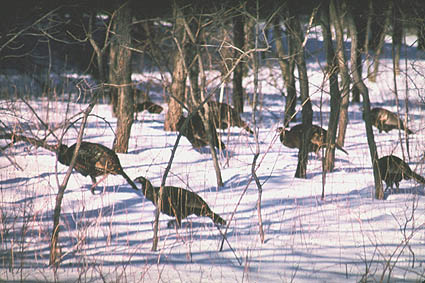
Storage pit with acorns.
Animal tracks left in the snow made tracking game somewhat easier than in other
seasons. Hunting and trapping of white-tailed deer, squirrel, rabbit, raccoon,
turkey, beaver, muskrat, and other animals supplied needed protein in the
winter. As winter approaches, many mammals grow heavy winter coats and put on
fat in the fall to keep them warm and carry them through the winter. Native
Americans exploited this fact by increasing their hunting in the fall and early
winter to acquire bedding and clothing, energy-rich fatty meat and bone marrow.
Surplus meat from successful late fall hunts were dried and smoked for later
use consumption. Thus like stored plant foods, dried and smoked meats were
important to the Mississippian's winter diet.
